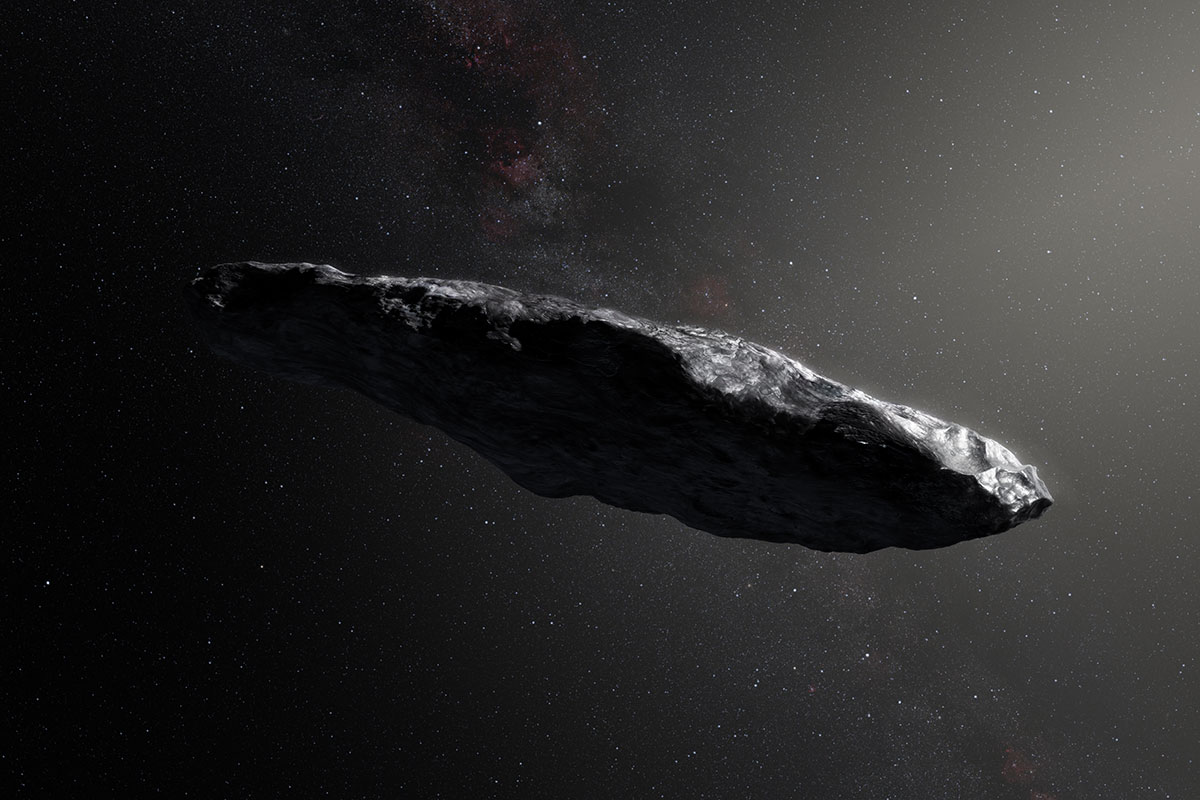Breakthrough Listen Is Eavesdropping on Strange Interstellar Object 'Oumuamua

Alien-hunting scientists are lending a (telescopic) ear to 'Oumuamua, a mysterious object recently spotted speeding through the solar system.
'Oumuamua, first detected in October with the Pan-STARRS 1 telescope in Hawaii, is the first likely visitor from interstellar space to ever be spotted in Earth's solar system. The object reached a peak speed of 196,000 mph (87.3 km/s). During its closest approach to Earth, also in October, the reddish, potentially cigar-shaped object passed by about 85 times the distance from Earth to the moon. It's up to a quarter-mile long (400 meters).
The global SETI (search for extraterrestrial intelligence) program Breakthrough Listen, funded by Yuri Milner, a Silicon Valley technology investor, announced today (Dec. 11) it will turn the 100-meter (330 feet) Green Bank Telescope in West Virginia to listen for potential alien signals from the object. ['Oumuamua: Our 1st Interstellar Visitor Explained in Photos]
Scientists have been intrigued by the reddish, elongated object because of its long and thin shape, which is unlike the asteroids and comets researchers have seen that are native to the solar system.
"Researchers working on long-distance space transportation have previously suggested that a cigar or needle shape [like 'Oumuamua exhibits] is the most likely architecture for an interstellar spacecraft, since this would minimize friction and damage from interstellar gas and dust," Breakthrough Listen representatives said in the statement. "While a natural origin is more likely, there is currently no consensus on what that origin might have been, and Breakthrough Listen is well positioned to explore the possibility that 'Oumuamua could be an artifact."
The telescope will begin observing the object tomorrow (Dec. 13) at 3 p.m. EST (2000 GMT) across four radio bands, from 1 to 12 GHz, and will observe over a total of 10 hours for its first phase, broken up into four segments based on the object's rotation.
At the object's current distance from Earth, it would take less than a minute for the telescope to detect a transmission with the power of a cellphone's, Breakthrough Listen representatives said.
Breaking space news, the latest updates on rocket launches, skywatching events and more!
Even without a signal, the telescope's radio inspection could reveal additional information about water or ice on the object, or a coma of gas surrounding it, neither of which have yet been spotted, they added.
"'Oumuamua's presence within our solar system affords Breakthrough Listen an opportunity to reach unprecedented sensitivities to possible artificial transmitters and demonstrate our ability to track nearby, fast-moving objects," Andrew Siemion, director of Berkeley SETI Research Center, said in the statement. "Whether this object turns out to be artificial or natural, it's a great target for Listen."
Email Sarah Lewin at slewin@space.com or follow her @SarahExplains. Follow us @Spacedotcom, Facebook and Google+. Original article on Space.com.

Sarah Lewin started writing for Space.com in June of 2015 as a Staff Writer and became Associate Editor in 2019 . Her work has been featured by Scientific American, IEEE Spectrum, Quanta Magazine, Wired, The Scientist, Science Friday and WGBH's Inside NOVA. Sarah has an MA from NYU's Science, Health and Environmental Reporting Program and an AB in mathematics from Brown University. When not writing, reading or thinking about space, Sarah enjoys musical theatre and mathematical papercraft. She is currently Assistant News Editor at Scientific American. You can follow her on Twitter @SarahExplains.
